What are the benefits of the new system?
There are lots of benefits to depositing your papers using Symplectic Elements:
- less information to enter than the current Open Access upload system
- it's not possible to upload a duplicate submission
- it's easy to see if your co-author has uploaded the paper
- your paper gets into the repository quicker, which increases its visibility
- you enter the information about your publication once but it is used in many systems saving you time in the future
- better reporting capabilities for the Open Access Service, which means more accurate reports for Departments, Faculties and Schools
- same high level of service and response from the Open Access team
- display and linkage of ORCIDs in Apollo and Symplectic Elements
- notifications if your paper is not compliant with the HEFCE open access policy
At first glance it might seem that the new system is asking for more information but to deposit an article you only need to fill in six fields. You can add more information if you want but this isn’t necessary as Symplectic Elements will automatically add this information when the paper is published. If you put a little bit of extra effort in when you deposit your publication then it will save you lots of time later on as the information will be reused in other systems, such as ResearchFish or your departmental profile page if they use Symplectic Elements data.
Where can I find out more information on how to deposit articles in Symplectic Elements?
We have produced both step-by-step instructions (opens pdf) for how to use Symplectic Elements to deposit your publication and a video example of a deposit (please note, the video content does not work with Internet Explorer).
More questions?
If you have any questions regarding the new deposit process and cannot find the answer to your question in the FAQs below please contact info@openaccess.cam.ac.uk.
Q.
How do I know if my co-author has already uploaded our paper?
Click on the title of the publication to view the publication details. Under the Apollo heading it will say whether or not any files have been deposited into the repository for this publication. If files have been deposited, you don’t need to upload anything.
Example of a paper with no deposited files.
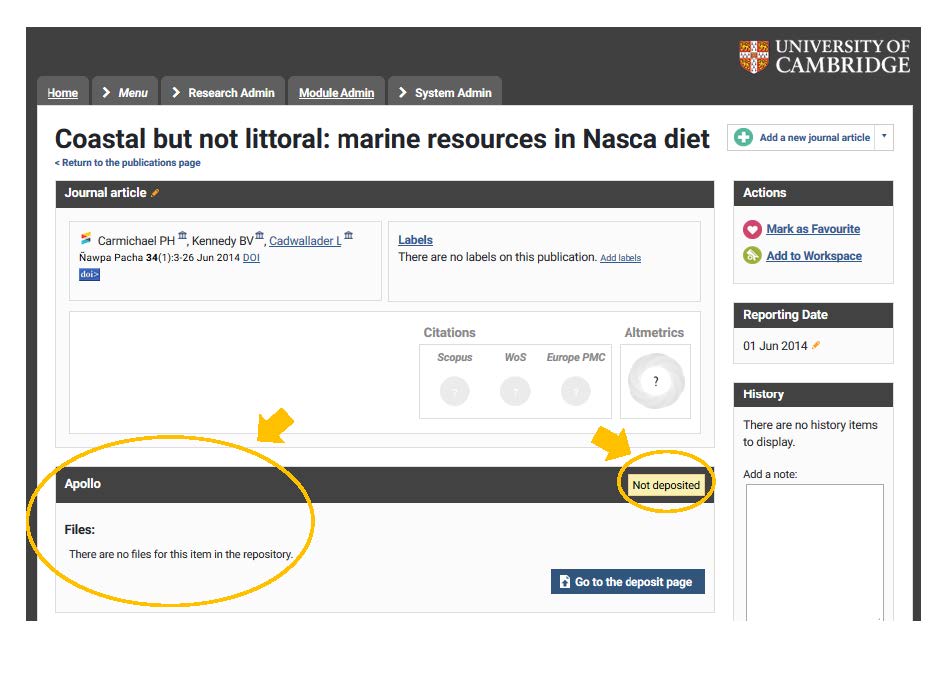
Example of a paper with deposited files.
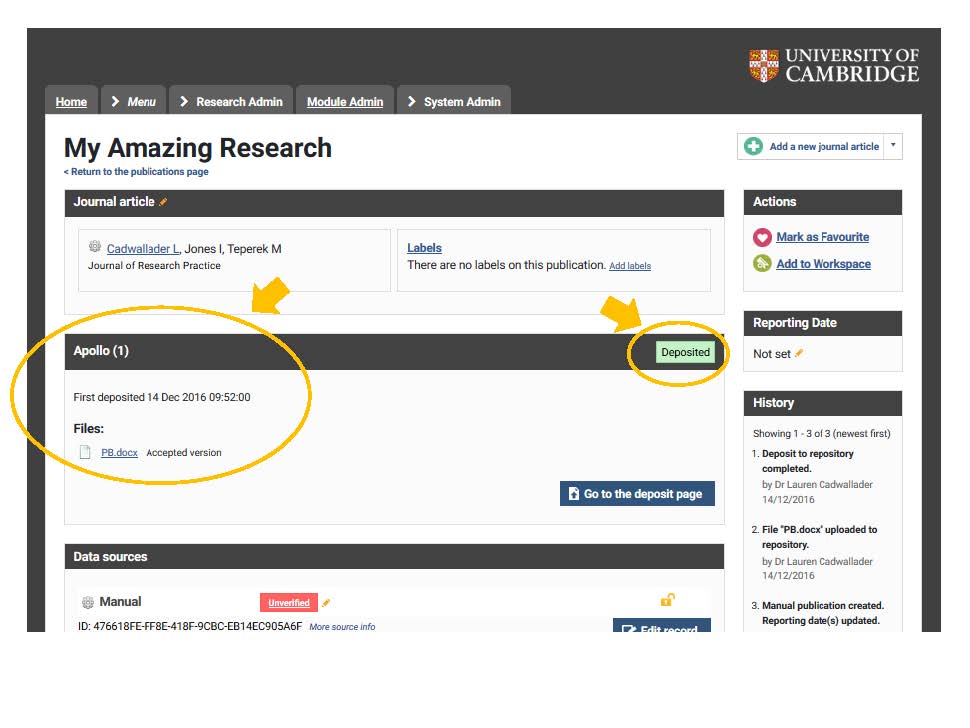
Q.
How do I upload a paper that I have already claimed?
Click on the title of the publication to go to the publication details page. Under the Apollo heading click on “Go to the deposit page”.
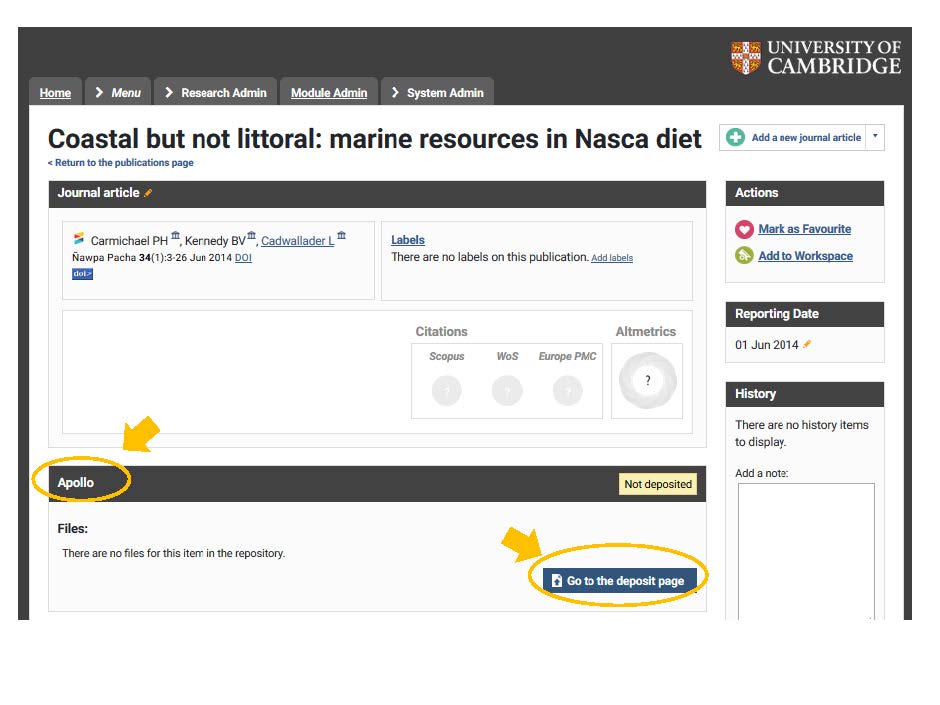
You can then select the file to upload. Please upload the accepted version, select this from the drop down menu and press the upload button. You’ll then need to tick the box to agree to the repository licence terms and conditions and finally press the “Deposit my publication” button to complete the upload.
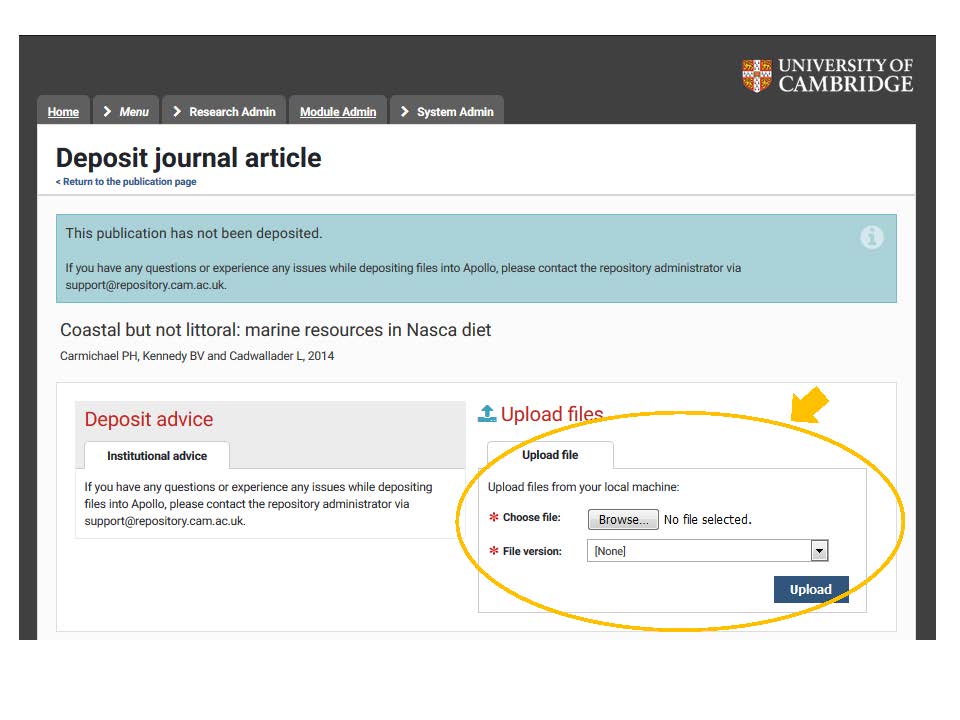
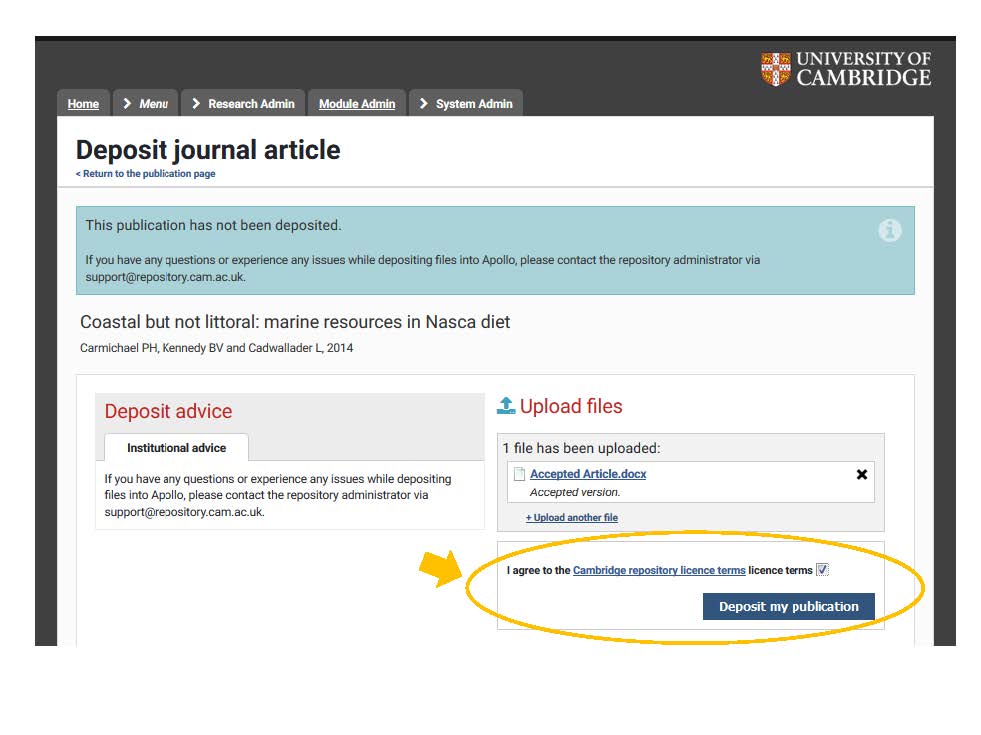
Q.
Which version should I upload?
Please upload the accepted version of the manuscript. This is the version that contains all the changes made after peer-review but has not been typeset or copyedited by the publisher.
Q.
Can I upload more than one file?
Yes, you can upload separate files for the manuscript, tables, figures and supplementary information if required. Please note, datasets need to be submitted through a different process.
Q.
Can I leave the Open Access Team comments about my submission as on the old Open Access upload form?
Yes you can. When you are entering details about your accepted manuscript there is a box towards the end of the form called “Comments for the Open Access Team”. Please enter any comments here.
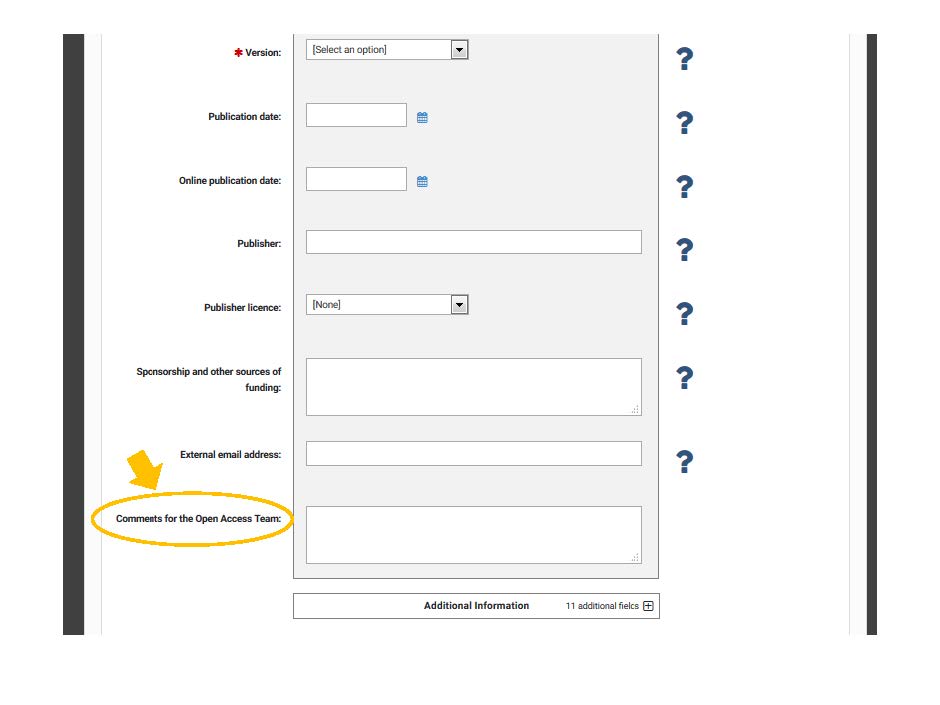
If you are depositing a paper that you have already claimed please email your comments to info@openaccess.cam.ac.uk. Please quote the title of the paper in your email.
Q.
Can I link a grant that isn't mine to my paper?
There are instructions on how to do this on Moodle here.
Q.
Can I upload files to Symplectic for my own record, i.e. that don’t get put onto the repository?
No you can’t. Symplectic Elements is not a content management system per se, instead it manages information about research outputs, grants, etc. Every file deposited in Symplectic will be submitted to the repository.
Q.
Are my older open access submissions going to be linked to my Symplectic account?
Yes, they will. Linking open access publications previously submitted to the repository with Symplectic accounts is very important in terms of accurate Open Access reporting. This work is high priority for the Open Access team.
Q.
Why is Symplectic asking me to manually add acceptance dates for my papers?
Any of your papers that were published after the 1st of April 2016 will be flagged by Symplectic Elements as potentially falling within the HEFCE open access policy. The HEFCE policy only applies to papers accepted after the 1st of April 2016 and therefore Symplectic needs the acceptance date in order to work out if your paper is within the scope of the policy.
You need to enter the dates manually because publishers are not supplying this information in their metadata and therefore Symplectic Elements cannot automatically retrieve this information. If you are unsure of the acceptance date, see if it is listed on the pdf of the published paper or on the journal's webpage for your paper. It is up to authors to enter this information into Symplectic Elements.
Q.
What do I do if I find duplicate publications?
If one of the records has files associated with it, or neither of the records do, you can merge the publication records. If both records have files associated (i.e. the publications have been curated in Apollo), DO NOT merge the records. Contact info@openaccess.cam.ac.uk with details of the records.
